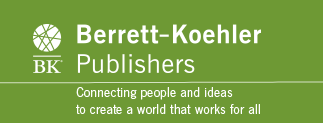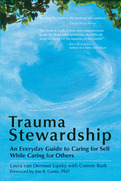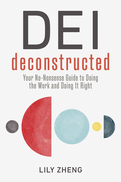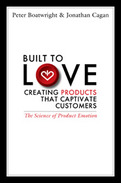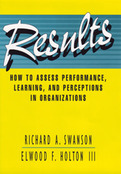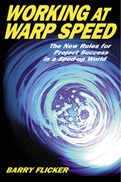2009
A longtime trauma worker, Laura van Dernoot Lipsky offers a deep and empathetic survey of the often-unrecognized toll taken on those working to make the world a better place. We may feel tired, cynical, or numb or like we can never do enough. These, and other symptoms, affect us individually and collectively, sapping the energy and effectiveness we so desperately need if we are to benefit humankind, other living things, and the planet itself.
In Trauma Stewardship, we are called to meet these challenges in an intentional way. Lipsky offers a variety of simple and profound practices, drawn from modern psychology and a range of spiritual traditions, that enable us to look carefully at our reactions and motivations and discover new sources of energy and renewal. She includes interviews with successful trauma stewards from different walks of life and even uses New Yorker cartoons to illustrate her points.
“We can do meaningful work in a way that works for us and for those we serve,” Lipsky writes. “Taking care of ourselves while taking care of others allows us to contribute to our societies with such impact that we will leave a legacy informed by our deepest wisdom and greatest gifts instead of burdened by our struggles and despair.”
2022
The importance of diversity, equity, and inclusion in the workplace cannot be understated. But when half-baked and under-developed strategies are implemented, they often do more harm than good, leading the very constituents they aim to support to dismiss DEI entirely.
DEI Deconstructed analyzes how current methods and best practices leave marginalized people feeling frustrated and unconvinced of their leaders' sincerity, and offers a roadmap that bridges the neatness of theory with the messiness of practice. Through embracing a pragmatic DEI approach drawing from cutting-edge research on organizational change, evidence-based practices, and incisive insights from a DEI strategist with experience working from the top-down and bottom-up alike, stakeholders at every level of an organization can become effective DEI changemakers. Nothing less than this is required to scale DEI from interpersonal teeth-pulling to true systemic change.
By utilizing an outcome-oriented understanding of DEI, along with a comprehensive foundation of actionable techniques, this no-nonsense guide will lay out the path for anyone with any background to becoming a more effective DEI practitioner, ally, and leader.
2011
Offers ten suprising leadership lessons and shows how they can improve snd enrich any leader or organization.
-
The first book to portray Mother Teresa as the realistic, pragmatic leader of one of the world's most recognized and successful global organizations
-
Offers eight surprising leadership lessons and shows how they can improve and enrich any leader or organization
-
Draws on coauthor Ruma Bose's firsthand experiences working with Mother Teresa
When most people think of Mother Teresa, they think of a saint--a spiritual hero of extraordinary humanitarian accomplishments, a Nobel Peace Prize winner. But Mother Teresa was also the leader of one of the world's largest and most successful organizations: the Missionaries of Charity. Since founding it in 1948 she has raised billions of dollars, and with over a million volunteers in more than 100 countries, it remains one of the most recognized brands in the world. How did one nun who never received any formal education in business build such an impressive global organization?
Frank, realistic, and firmly grounded in practicality, Mother Teresa's leadership style helped to inspire and organize people across the world. This book shares eight essential leadership principles drawn from Mother Teresa's example and applies them to today's business world. Authors Ruma Bose, an entrepreneur who volunteered with Mother Teresa, and Lou Faust, a leading business expert, are the first to examine her in this light--as a leader whose management style and dedication to a singular vision led to one of the world's most unlikely success stories.
Mother Teresa may have been a saint, but her spectacular success was not a product of divine providence. Her genius was the simplicity of her vision and her dedication to its implementation. It was in the way she treated her people, refusing to distance herself from the everyday work of a typical sister of the Missionaries of Charity. It was in how she handled tough choices--like accepting donations from brutal Haitian dictator Francois "Papa Doc" Duvalier. These were the principles that made her the great leader of a global organization, and they can be applied by anyone in any organization--no sainthood required.
2010
-
Offers data-driven proof that products and services appealing to customers emotional needs outsell the competition
-
Provides a clear method and set of tools to enable companies to develop high emotion products and services
-
Includes case examples from a wide variety of industries
Emotion is the single greatest lever in building enduring relationships with customersits what makes them not just purchase a product or service, but get excited about it. Leading companies do more than produce things that work better. They address their customers emotional needsthey make them feel better. But this isnt something you can add on after the fact. Your products and services must be built to love from the very start. This book shows you how.
Peter Boatwright and Jonathan Cagan have worked on product and brand strategy with market leaders like Apple, Whirlpool, International Truck, PG&E, and many others. Theyve found that to really connect with customers emotions must be generated by the product itself, not simply tacked on through advertising. And they prove the bottom-line value of product-driven emotion by analyzing the stock performance of companies that sell high-emotion products and through data that show people are willing to pay more for products with emotionally-rich features.
After showing that authentic product emotion really does pay off, they move on to howhow emotion can be broken down into its core building blocks, how it is then used to develop new products and services, and how product touchpoints in particular visual touchpoints deliver those emotions. Engaging case studies from a variety of industries will help you understand how to integrate emotion into your products and services, regardless of the nature of your business.
Emotion is fundamental to all that is human, including the products we enjoy. Built to Love will help you gain loyal, even fanatical customers by going beyond mere efficiency and speaking to their deepest needs and wants.
1999
This book presents a practical guide to building a successful, competitive, and cost-effective HRD practice that meets customers' needs. Results teaches readers a highly effective, easy-to-learn, field tested system for assessing organizational results within three domains: performance (system and financial), learning (knowledge and expertise), and perceptions (participant and stakeholder).
Why measure results in HRD? Because the "corporate school" and "human relations" models of HRD practice, whereby development occurs simply because it is good for employees, no longer works. If HRD is to be a core organizational process, it must act like one and hold itself accountable. Measuring results, particularly bottom-line performance results, is key to gaining support from top management. And those who measure results ultimately find it a source of program improvement and innovation as well as pride and satisfaction.
While Results is theoretically sound, it is firmly rooted in practice, offering a core five-step assessment process that gives readers a simple and direct journey from analysis inputs to decision outputs. Whether they have assessment tools but no theory, theory but no tools, or no tools and no theory, this book will equip them to quickly and effectively assess their results.
- Shows human resource development (HRD) professionals how to measure organizational results within the domains of performance, learning, and perceptions using the effective and efficient Results Assessment System
- This widely praised system simplifies the complex issues of assessment, enabling HRD professionals to clearly demonstrate their results
- Real-life examples illustrate how the principles work
- From the author of Analysis for Improving Performance , winner of the 1995 Outstanding Instructional Communication Award from the International Society for Performance Improvement and the 1995 Society for Human Resource Management Book Award
- Introduces four "Rules of Warp Speed" that can help readers break through the following common barriers to success:
- Work overload
- Lack of support
- Poorly defined goals
- Blame and finger pointing
- Unrealistic deadlines
- Endless meetings
- Poor communication
- Constant fire fighting
- Incomplete planning
- Constantly shifting targets or goals
- Offers a startling exercise-The Project Game-that demonstrates how to keep fires from burning out of control and reduce the number of fires you fight each day
